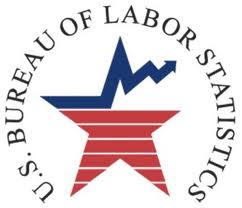Week in Review
Economists were thrill to discover that Non-Farm Payrolls (NFP) soared by slightly over 320k last month easily beating market expectations of 230k and posting its best result since the start of 2012. In addition, the unemployment rate continued to hover about a six year low by remaining unchanged at 5.8%. Prominent analysts summarized this impressive performance by stating that it will definitely exert additional pressure on the US Federal Reserve to contemplate hiking its benchmark interest rates more quickly than previously advised.
This labor report was eventually assessed to be even more inspiring by disclosing that the number of jobs produced in both September and October were revised higher by a total of almost 45k. The Non-Farm Payroll figure released last Friday denoted the tenth consecutive month during which over 200,000 new posts were generated marking the longest such sequence in nearly twenty years. Investors subsequently boosted their risk appetite propelling stocks upwards as their confidence and faith grew in the ability of the US economy to weather the adverse impacts of potential economic slowdowns in the Eurozone, Japan and China.
The US Department of Commence also joined the party last Friday by issuing a report revealing that exports had expanded during October by 1.2%. This result not only decreased the national trade deficit but also demonstrated that business relationships with troubled regions, such as China, Japan and the Eurozone, continued to flourish. Nevertheless, the key event of last week was unquestionably the release of the remarkable US Labor report which also rectified that wage growth was starting to revive. This factor is extremely important as it is one of the key parameters that the US Federal Reserve carefully tracks and assesses when determining the optimum time to instigate its first hike in interest rates.
What to Expect This Week
This coming week will witness the release of the following major global economic indicators.
Canada will launch the week by presenting its Building Permits for October on Monday. This parameter is expected to strengthen for the second consecutive month.
On Tuesday, the Economic Finance Ministers of the Eurozone will meet. They are expected to discuss and react to all the present major catalysts influencing this region including the potential instigation of new stimulus measures, etc. Great Britain will then declare its industrial Production for October which is predicted to pare previous gains. Later in the session, the United Kingdom is scheduled to announcement its estimated Gross Domestic Product for last month, which should continue to hover within its 0.6% to 1.0% range.
China will commence Wednesday by disclosing its Consumer Price Index for November. Many analysts are advising that this release could well be weaker-than-expected. The Reserve Bank of New Zealand will then reveal its Interest Rate decision and any new Monetary Easing policies. A press conference will be held to support these events. As the New Zealand Dollar is presently trading very strong against other major currencies, attempts are expected to weaken the NZD.
Australia will launch Thursday by declaring its Unemployment Rate and Employment Changes for November. Economists are forecasting that just over 15,000 new jobs should have been created during last month. The USA will subsequently print its Retail Sales for November with a 0.3% result the favored outcome.
The Eurozone will publish its Industrial Production for October on Friday. A surprise to the upside could provide the euro with a much needed boost. The USA will next issue its Producer Price Index for last month. With wage growth now in progress, a print higher than the expected 0.1% decline has subsequently become a viable possibility. The USA will then complete the week by presenting a key Consumer Sentiment Index for this month. This important parameter is predicted to track other recent economic indicators by surpassing analysts’ expectations.




